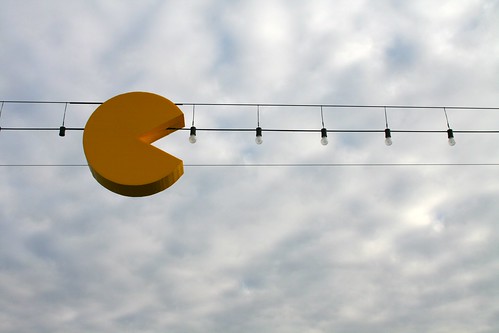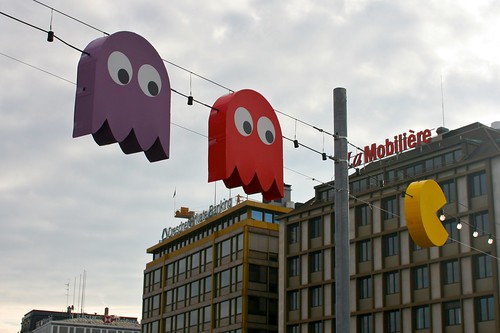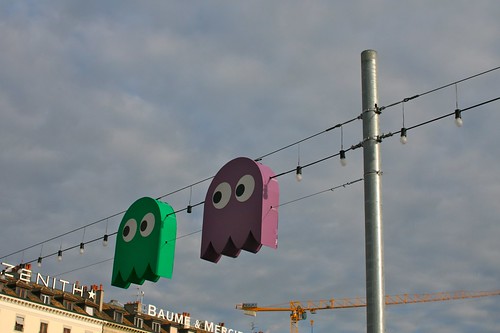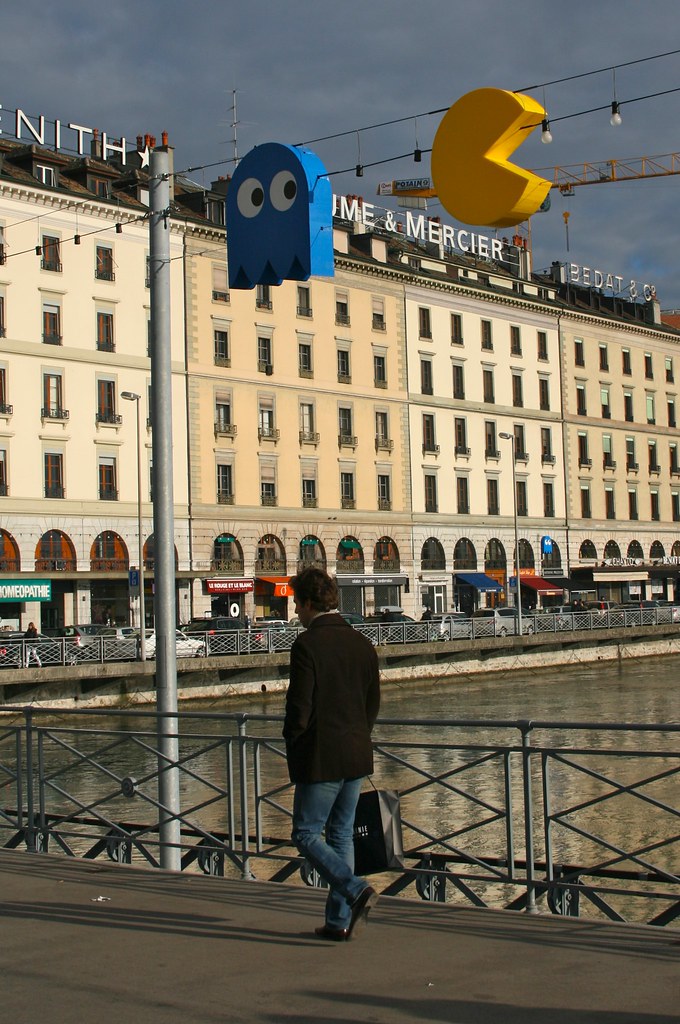As described by Toru Iwatani, Pac-Man creator:
"Well, there’s not much entertainment in a game of eating, so we decided to create enemies to inject a little excitement and tension. The player had to fight the enemies to get the food. And each of the enemies has its own character. The enemies are four little ghost-shaped monsters, each of them a different colour - blue, yellow, pink and red. I used four different colours mostly to please the women who play - I thought they would like the pretty colours.




The brief encounter with this real-world Pacman in Geneva (made by Bufalino Benedetto & Benoît Deseille for the "Arbres et Lumières festival) was particularly curious in conjunction with this insightful short paper called "Why do Pinky and Inky have different behaviors when Pac-Man is facing up?" by Don Hodges:
"In the videogame Pac-Man (and in many of its sequels and clones), it has been previously established that the ghosts, Pinky and Inky, track Pac-Man by examining the direction he is facing and use that information as part of their determination of their respective targets. For example, Pinky usually targets the location four tiles in front of Pac-Man's location. However, if Pac-Man is facing up, this location becomes four up and four to the left of Pac-Man's location. Inky has a similar change in his targeting when Pac-Man is facing up. Why do Pinky and Inky have different behaviors when Pac-Man is facing up?
The short answer is, in my opinion, because of a programming bug. Here is the evidence."
Why do I blog this? I find it interesting to think about the Pacman ghosts algorithms, especially in the context of real-world Pacman instantiations... and how it would apply to other kinds of actors (humans/non-humans) in the physical environment.